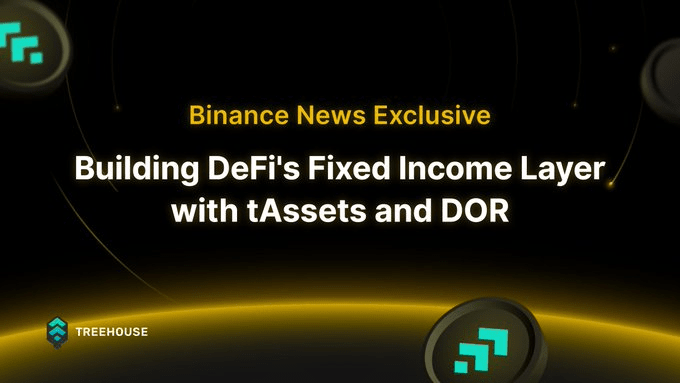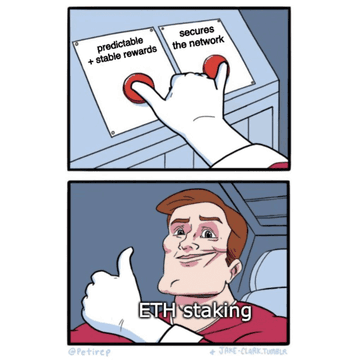I. Are you also tired of 'anxious farming' in the DeFi world?
Let's talk about ourselves first. After spending a long time in Web3, do you also feel a kind of 'digital fatigue' like I do?
Every day, countless new protocols emerge, and APY (Annual Percentage Yield) fluctuates like an ECG. We, like diligent farmers, constantly migrate, nest, and calculate impermanent loss among various mining pools, fearing we might miss a gold mine or step into a giant pit. Our energy is extremely scattered; is the money we put in really 'earning interest,' or just playing with our hearts in a volatile market?
This feeling, I call 'anxious farming.'
And Treehouse is precisely the 'anomaly' I see trying to solve this anxiety.
They originally started as a DeFi analytical tool, somewhat like a Web3 version of 'Bloomberg Terminal,' helping users see their scattered assets and risks across various chains and protocols clearly. This solved the problem of 'not being able to see clearly.' But soon they realized that merely 'seeing clearly' is not enough.
Founder Brandon Goh (a former senior executive at Morgan Stanley) mentioned in an interview that DeFi is filled with a lot of unstable 'floating rates' but lacks the most basic and important component—a reliable 'fixed income' infrastructure.
This is their original intention to evolve from an analytical tool to building a 'decentralized fixed income layer.' This transformation has shown me the bigger picture. They do not want to just be a shovel; they want to build a road.
II. Unveiling the two layers of 'veil' of Treehouse: tAssets and DOR
To understand Treehouse, you only need to grasp two core concepts, and I'll try to explain them in simple terms.
First layer: tAssets - Making 'yield-generating assets' smarter
You can think of tAssets as a 'smart yield aggregator.'
Taking their core product tETH as an example. You put your ETH or liquidity staking tokens like stETH in, and you get tETH. What will this tETH do?
Base earnings: First, it will help you earn the basic earnings from Ethereum PoS staking, which is the most stable underlying profit.
Automated arbitrage: More cleverly, it will act like a tireless trader, automatically capturing the interest rate differentials between various lending protocols (like Aave, Compound) for low-risk arbitrage. This is your 'excess return.'
In the past, these complex operations required professional trading teams to accomplish. But now, Treehouse has turned it into a foundational protocol where you just need to hold tETH to participate automatically. This is not simple 'mining' but managing and optimizing your yield-generating assets.
Second layer: DOR (Decentralized Offered Rate) - Providing DeFi with an 'interest rate benchmark'
This is where I believe Treehouse is most ambitious and has the greatest potential to change the game.
What are the interest rates like in the current DeFi world? Protocol A is 5%, Protocol B is 8%, Protocol C might suddenly give you 20%, but you don't know which one is sustainable or what the true market fair rate is.
DOR is like trying to create a Web3 version of LIBOR (London Interbank Offered Rate).
Imagine a transparent board showing a fair 'Ethereum staking interest rate curve' (TESR - Treehouse Ethereum Staking Rate) quoted by the smartest participants in the market (Panelists) and formed through a consensus mechanism.
This interest rate is not controlled by any single institution but is decentralized and generated through market dynamics.
What does this mean?
For ordinary users: You can clearly know whether your current yield is above or below the market fair level.
For developers: With this interest rate benchmark, developers can build countless more complex financial derivatives on top, like interest rate swaps, fixed-rate loans, on-chain bonds, etc.
This will bring a whole new trillion-dollar market to DeFi—the fixed income derivatives market. It's like building the first highway and traffic rules in a wilderness.
III. Data doesn't lie: Let's take a look at the muscle of Treehouse
Having a narrative is not enough; in the world of Web3, it ultimately comes down to on-chain data. I specifically went to DefiLlama to check (data as of August 23, 2025; I recommend everyone verify the latest data themselves):
Total Value Locked (TVL): Currently stabilized around 500 million USD. This is a very healthy number in the current market environment, proving the real demand and trust in the market.
Active users: There are already over 66,000 users. This indicates that its products are not only played with by whales but also have a decent user base.
(It is recommended to pair this with a chart of DefiLlama's TVL growth trend for a more impactful visual effect)
More importantly, their codebase updates are very active, and they have recently released audit reports from several top security companies (like Trail of Bits, Sigma Prime). In Web3, security is 1, everything else is 0. This emphasis on security is a hallmark of a mature team.

IV. Some calm reflections: Risks and challenges
Of course, I'm not mindlessly praising. Every project has its risks and challenges; that's the real world.
Underlying protocol risks: Treehouse's earning strategy relies on other DeFi protocols (like Lido, Aave). If these underlying protocols encounter problems, Treehouse will also be affected. This is a systemic risk.
The long road to market adoption: The grand vision of DOR requires time and widespread market adoption. Whether it can truly become an industry standard still needs to compete with many rivals (like Pendle) and gain more integrations from mainstream protocols. This is a war of attrition.
Volatility of token prices: The recent price of the token has fluctuated significantly, which is a test for early investors. You need to ask yourself whether you value short-term prices or long-term value capture.

V. Why I think Treehouse is worth your time to study?
In conclusion, I want to summarize my 'feelings' about Treehouse.
In this market full of memes and short-term speculation, Treehouse is an anomaly. It's not sexy; in fact, it’s a bit 'boring.' But it’s precisely this 'boring' that shows me what financial infrastructure should look like—robust, reliable, and future-oriented.
What it attempts to solve is the core issue of DeFi moving from 'barbaric growth' to 'mature stability.' It is not chasing the next hotspot but creating the 'soil' for the next hotspot.
I don't know if Treehouse will skyrocket tomorrow, but I do know that projects that seriously build infrastructure like this are worth understanding and contemplating for each of us in Web3.



